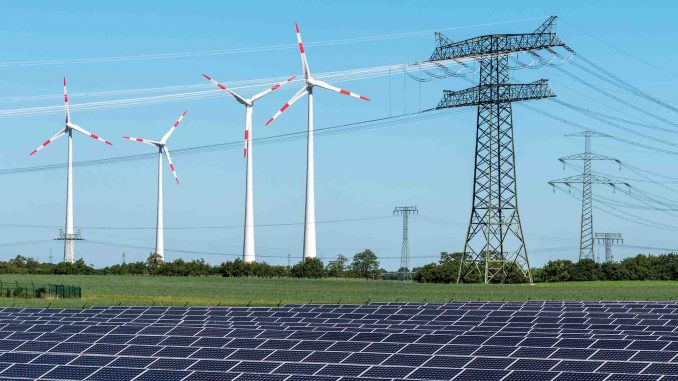
Renewable energy microgrids are not new to India and have been deployed as part of the central government’s efforts under various rural electrification programmes as well as solar energy goals. However, the installation of microgrids has not taken place on a large scale primarily due to the challenges related to the capital-intensive nature of projects, policy flip flops, implementation challenges and a lack of awareness. Nonetheless, renewable energy microgrids hold a significant potential for increasing the energy access for the population living in remote and rural areas where the central electricity grid cannot reach or the electricity supply is interrupted. The key benefit of rural renewable energy microgrids is that they generate power that is cleaner, safer and more cost-effective than that produced from incumbent liquid fuels such as diesel and kerosene in generator sets. The cost of kerosene and diesel varies widely, although it typically increases proportionally to remoteness of the location of generator sets. As a result, remote sites offer a viable business case for microgrid developers to set up their projects.
Among renewable energy technologies, solar photovoltaic (PV) is often considered the most viable for setting up microgrids as wind energy-based systems make economic sense only at the megawatt scale while biomass and micro-hydro generate optimally in multi-kilowatt scale projects. A solar microgrid consists of one or many solar PV generation units and can be coupled with an energy storage solution, a diesel generator, or other energy sources. It can be operated either by connecting to the main power grid or in island or self-sustaining mode. Typically, microgrids do not have power transmission capabilities and are not geographically spread out. Islands, remote communities, industrial or commercial establishments, defence establishments and certain urban communities can benefit from such solutions. Apart from providing access to electricity, solar microgrids result in operational savings by reducing conventional power use, bringing down investments in transmission and distribution infrastructure, and help in meeting renewable purchase requirements.
A solar microgrid when coupled with energy storage provides round-the-clock power, even when solar radiation and grid power are not available. Commercial establishments can reduce their electricity bills by using the stored solar power when grid power tariffs are high. Rapidly declining battery prices, combined with increasing solar deployment, have made microgrids a viable solution that can deal with the intermittency of solar power generation.
Cost economics
Initially, most microgrid projects were funded by the government or grants from private companies.
Nowadays, energy service companies (ESCOs) are increasingly providing/setting up microgrids with a compelling value proposition to customers and investors. As per a report on Microgrids in India – Myths, Misunderstandings, and the Need for Proper Accounting (February 2018) by Dr Rahul Tongia, fellow, energy and sustainability, Brookings India, the electricity tariff works out to be just under Rs 4/kWh for the PV system capex excluding the battery, or just over Rs 4/kWh inclusive of the land rental. These figures are based on the assumptions of 4.75 kWh/kW per day power output, a plant load factor of about 20 per cent, capital costs of solar PV plus inverters, charge controllers, etc. at Rs 50,000 per kW, excluding the battery, and the land rental of Rs 50,000 per acre per year. Further, adding a base battery to a solar PV plant adds about Rs 7.5/kWh (assuming that the installation of lead acid batteries will cost about Rs 5,000/kWh, a lifespan of five years and a 10 per cent financing discount rate). The installation of batteries improves reliability when solar irradiation is insufficient and helps to store energy to meet fluctuations in demand. The report notes that the fundamental challenge for microgrids is determining the system capacity as under-sizing will lead to failures to meet loads, while oversizing will have a monetary impact.
It is difficult to compare the cost of electricity across microgrids and the incumbent sources of electricity. While grid supply may be economical, the lack of quality supply makes microgrids a better option for providing electricity to remote rural communities with less loads.
The returns on investment for microgrids are mainly dependent on project installation costs, operation expenses, and the amount of revenue generated. In order to improve investment returns and reduce tariffs, a reduction in equipment, finance, and soft costs (site/customer acquisition and permitting) is critical. The project costs depend on several factors such as major hardware components, population density, location, permitting, taxes, and land costs. As per a report titled Microgrid Market Analysis & Investment Opportunities by Microgrid Investment Accelerator, the cost per watt is relatively low in India. Overall, there is a wide variation in component costs, which can range from $1.5/Watt to $8/Watt on an average for solar PV systems without batteries, and $2-$12/Watt for solar PV systems with batteries. Larger system sizes often have lower per unit costs due to economies of scale (bulk purchasing, soft cost reduction per KW, etc.).
Policy and regulatory overview
Microgrids are being promoted by the Ministry of New and Renewable Energy (MNRE) under the Solar Off-grid and Decentralised Applications Programme. The programme is part of the Jawaharlal Nehru National Solar Mission and is primarily focused on providing energy access solutions in the rural and remote areas. During Phase-I and Phase-II of the programme, the thrust was on applications such as solar lighting, solar water pumps for irrigation and drinking water facilities, solar study lamps for students, and mini/micro-grids. As of January 2018, 63 solar microgrids of 1,899 kWp aggregated capacity were reported to be installed in the country with financial support from the ministry. In August 2018, the central government approved the continuation of the programme (Phase-III) for the period 2018-19 and 2019-20. The target for solar rooftop installations for the two years is 118 MWp, with an estimated outlay of Rs 6.5 billion.
The MNRE also issued a draft national policy for renewable energy mini-and microgrids in 2016 to develop up to 500 MW of capacity with private sector participation by 2021. The draft policy proposed the regulation of prices for microgrid projects while providing tariff determination flexibility to operators. It had provisions for single-window clearances for regulatory approvals and right of way. It also directed the formation of local village committees to ensure greater adoption, payment collection and faster dispute resolution. The policy, although a step in the right direction, has still not been finalised.
In addition, the National Smart Grid Mission also promotes the development of microgrids on islands, and across SEZs, institutions and commercial hubs.
Besides, microgrid policies and regulations differ from state to state. Uttar Pradesh, for instance, has taken progressive steps in promoting microgrids. It was the first Indian state to draft and ratify the Mini Grid Renewable Energy Generation and Supply Framework that came into effect in June 2016. The state has also set up a single window clearance system – Udyog Bandhu – for microgrid developers. The Uttar Pradesh Electricity Regulatory Commission (UPERC) has also notified the Mini Grid Renewable Energy Generation and Supply Framework Regulations, 2016 that lay the guidelines regarding system sizes, tariffs, as well as options for minigrid owners in the event of grid extension.
Challenges and the way forward
Large-scale microgrid deployment faces many constraints as currently there is no standard model that can be replicated all over the country. The microgrid market is immature and the lack of access to data on viable business models hampers private and commercial investment in the segment. If a microgrid is solely based on renewables, it invariably requires energy storage solutions, which significantly raise the capital cost of such systems. The lack of access to capital is a significant impediment to the development of microgrids. Further, microgrid developers need to be provided an assurance on the future of their projects if the grid is extended till their service areas. This can be done through firm policy and regulatory guidelines.
Challenges notwithstanding, the microgrid market is growing mainly on the back of a reduction in capital costs of renewable energy equipment, especially solar panels and battery storage systems. Further, increased government commitment to universal electrification and the expansion of off-grid solar augurs well for the growth of microgrids in the coming years.



